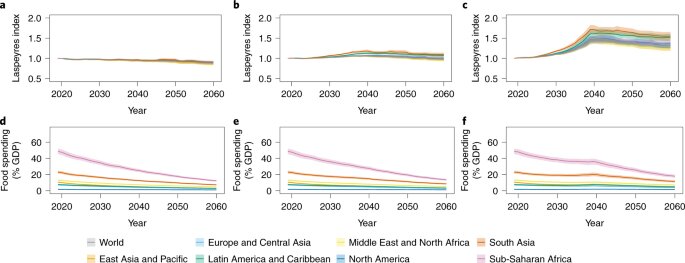Area-based conservation targets aimed at stopping and reversing global biodiversity loss are set to form an integral part of the post-2020 Global Biodiversity Framework discussions later this year. An international team of researchers have however found that strictly protecting global land area for conservation could have an adverse impact on human health and food security in some parts of the world.
The study, which has just been published in Nature Sustainability, was a collaboration between the University of Aberdeen and the University of Edinburgh in the United Kingdom, the International Institute for Applied Systems Analysis (IIASA) in Austria, and the Karlsruhe Institute of Technology in Germany. The researchers modeled the implications of strict conservation protection of 30% and 50% of the terrestrial land surface for biodiversity, and found that global and regional food prices would increase as a result, in turn affecting food security and human health.
It is important to note that for the purpose of the study, the team assumed that the protection of 30% and 50% of the terrestrial land surface is stringent and agriculture is gradually displaced from these areas. Given the current debate and uncertainty about the form that protected areas should take, the assumptions are clear, but they are extreme. By exploring such strict protection scenarios, it is however possible to explore the worst-case outcomes in terms of human health and food security.
Specifically, the analysis revealed that higher food prices would increase the number of underweight individuals across world regions and also reduce fruit and vegetable consumption, which would cause an increased number of human deaths from diseases associated with malnourishment and low fruit and vegetable consumption.
Developing regions are worst affected by reduced food provisioning in terms of undernourishment. Conversely, developed world regions are largely insulated from the negative effects of stringent area-based protection, and arguably reducing calorie consumption and levels of obesity is a desirable outcome.
Lead researcher Roslyn Henry, a Research Fellow at the University of Aberdeen’s School of Biological Sciences, who led the research while working at the University of Edinburgh, explains: “Area based conservation approaches are some of the most important tools for achieving biodiversity targets. However, they will need to be implemented with care to ensure they do not compromise food security and human health goals, particularly in vulnerable world regions.”
The researchers further point out that global area-based targets will require extending protected areas and restoring natural land. If this expansion restricts agriculture then the consequences may be felt in food production sectors with reduced food provisioning, potentially compromising food security goals and human health, particularly in vulnerable regions.
“Our modeling work confirms, similar to previous studies, that stringent biodiversity protection everywhere is not a good strategy and risks progress towards other Sustainable Development Goals (SDGs) such as good human health and wellbeing (SDG 3). Instead protected areas need to be designed with people and biodiversity in mind, context-specific, and within multifunctional landscapes, while integrating scientific knowledge of local and global origin and across disciplines,” notes study coauthor Martin Jung, a researcher in the Biodiversity, Ecology, and Conservation Research Group at IIASA. “Strict protection through protected areas will remain necessary in some areas, for instance, for species and ecosystems sensitive to disturbance, but not as a blanket solution globally.”
While the study explores the extreme end of conservation measures, the analysis provides insight into potential trade-offs between strict conservation measures and global human health, building on priority maps created through the Nature Map project, which are meant to be used as a decision support tool for major conservation initiatives and integrated spatial planning. Although these maps do not specifically prescribe any form of management, quantifying such trade-offs and impacts can aid conservation planning and negotiations. In particular, the findings highlight that radical measures could lead to undesirable and unequal health and food security outcomes if implemented globally. Moreover, the results from this work emphasize the need to evaluate human health and food security outcomes associated with area-based conservation, particularly in food insecure regions of the world.
More information:
Roslyn C. Henry et al, Global and regional health and food security under strict conservation scenarios, Nature Sustainability (2022). DOI: 10.1038/s41893-021-00844-x
Provided by
International Institute for Applied Systems Analysis (IIASA)
Citation:
Ill-considered area-based biodiversity conservation could affect food security and health (2022, February 4)



